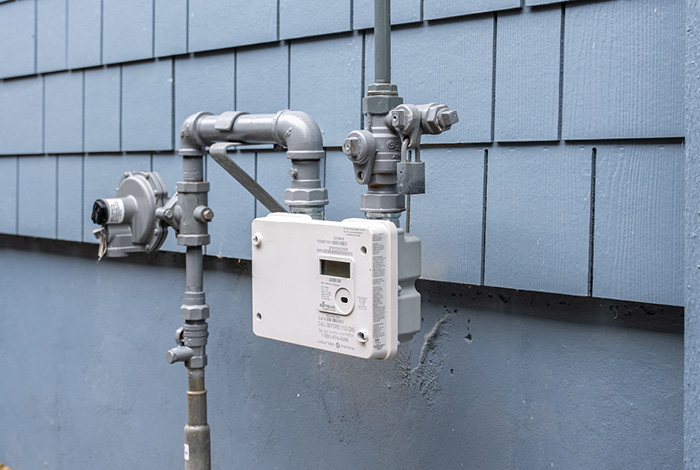Building to higher Step Code levels regardless of energy source
October 1, 2024
We have offered the New Home Program since 2011 to help builders and developers in their efforts to construct new homes that are more energy efficient than minimum BC Building Code requirements. Over the years, the program has been updated to address things like the introduction of the BC Energy Step Code or changes to government regulations. This year is no different.
(Re)introducing the New Home Program
We’ve got new New Home Program rebates to help lower the costs of incorporating higher energy efficiency into new home construction and building to higher code standards.
Whether connecting to the gas or to the electricity system (in FortisBC’s electric service territories), this revised rebate program will help support builders and developers achieve Step 4 and Step 5 of the BC Energy Step Code. Further, the 2024 offering has higher rebate amounts than previous iterations for whole home performance rebates as well as rebates for an integrated design process focused on improved building envelopes and installing high-efficiency equipment.
Builders from across B.C. are demonstrating that prioritizing energy efficiency in new home projects can help achieve higher levels of the BC Energy Step Code, regardless of the energy source, while providing homeowners with a comfortable home. We worked with some of these builders to develop a series of case studies to create a better understanding of the approaches needed to reduce total energy requirements of new homes across different regions of the province.
These case studies show how builders and homeowners can move towards building and living in increasingly energy-efficient homes by choosing an energy-efficient building design that focuses on air tightness, increased insulation and high-efficiency mechanical systems.
Air tightness was top of mind for one such case study. The project—a 2,600 ft 2 single family home based in Campbell River, B.C.—was actually the builder’s first foray into achieving a higher step code level. The builder also wanted to use gas heating equipment.
As one part of the process, a mid-construction blower test was completed. This identified and addressed any issues with air sealing, since an air tight envelope is critical to a home’s energy performance. This has become a common practice for most of the homes the builder now builds. Their tests continue to identify problems with sizable leaks around pot lights. To address this issue, the home builder now also seals up pot lights prior to installing them to significantly improve their air tightness.
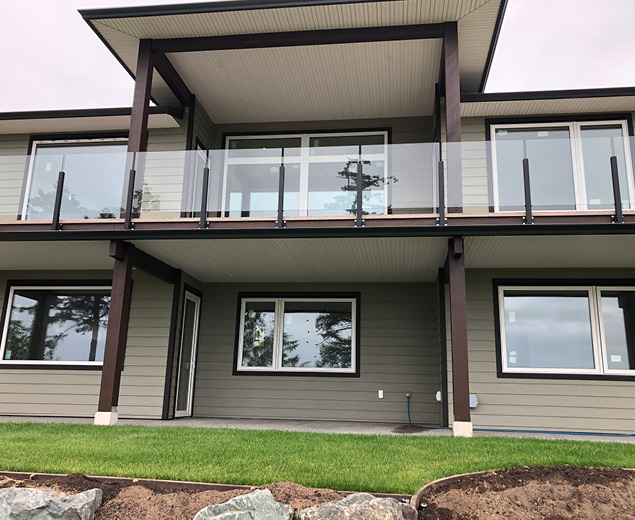
This Campbell River home marked the builder's first foray into achieving a higher step code level.
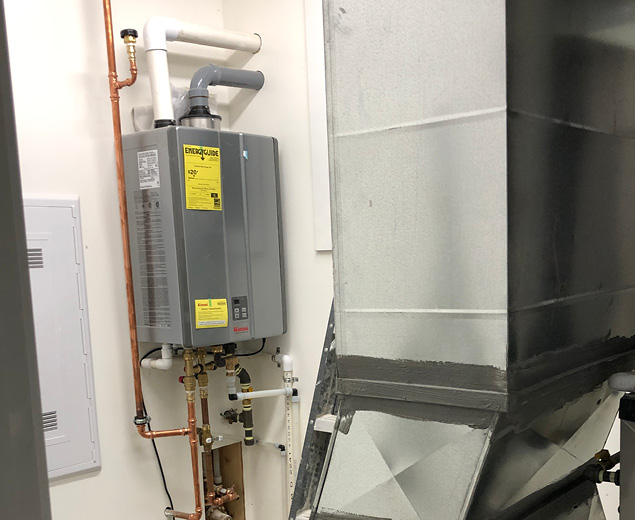
The builder also wanted to use gas heating equipment.
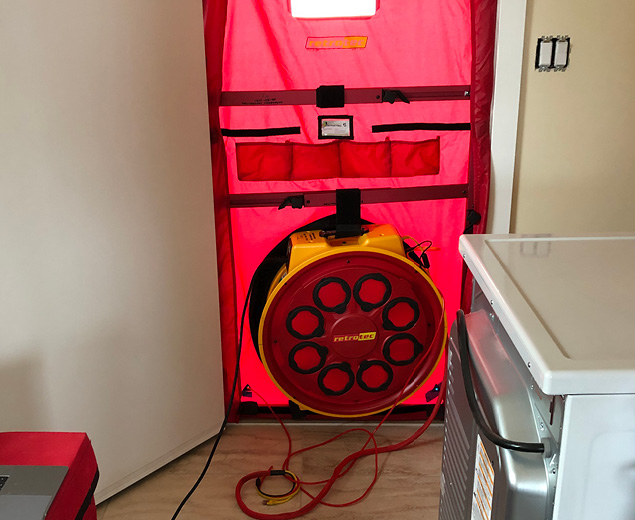
As one solution to this approach, a mid-construction blower test was completed.
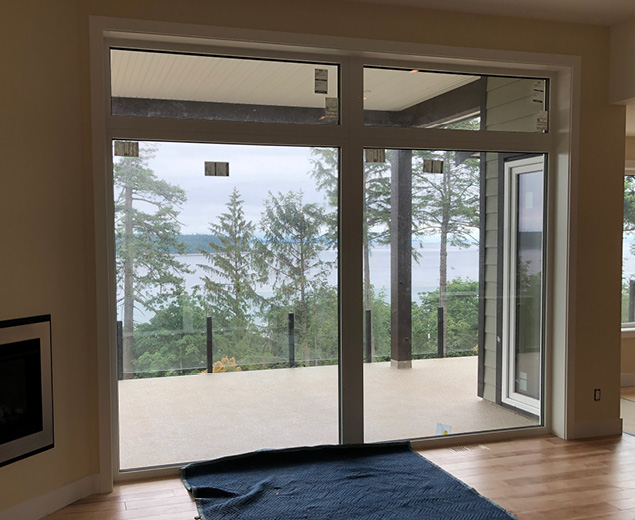
Triple-pane windows were also installed.
Want to conduct a mid-construction blower test of your own on your next new construction project? Our New Home Program offers an optional rebate to help lower the cost.
Step (Code) on the gas
It’s also possible to build a home connected to the gas system to Step 4 and Step 5, the highest levels of the BC Energy Step Code. Today, gas customers also have one per cent of their gas designated as Renewable Natural Gas1 (RNG) through our designated RNG blend.
We believe that both electricity and gas energy systems have an important role to play in reaching energy reductions. It’s also important to provide a pathway to net-zero energy ready for buildings where the gas system is the preferred option from both a technical and customer perspective.
Another case study helps demonstrate that it is possible to use gas space and water heating in new home construction and achieve Step 5 of the step code (our New Home Program offers up to $20,000 in rebates for building to Step 5). Also built in Campbell River by the same builder, the home put a specific focus on architecture. It used dome-like structures and cathedral ceilings to achieve natural cooling elements.
An additional part of the builder’s process was to work with an energy advisor. Our New Home Program offers up to $1,500 in rebates for energy advisor support. This includes a $200 rebate issued to the energy advisor and an $800 rebate to the builder when an energy advisor is hired for a project to perform work in compliance with the BC Energy Step Code.
Step 5 of that code indicates that the home has been constructed as net-zero energy ready, meaning it has the ability to achieve net-zero energy by using renewable energy sources, such as solar panels. A net-zero energy home produces as much energy as it consumes on an annual basis.
We believe a successful transition to a net-zero future, to help support the Canadian government’s net-zero emissions commitment for 2050 and the B.C. government’s intention to adopt a net-zero target, must involve utilities like FortisBC to invest in and own and operate energy infrastructure that reduces greenhouse gas (GHG) emissions while maintaining a resilient, reliable and affordable energy system.
“We seek to help lower GHG emissions from buildings, particularly in new construction, to help move new homes towards the net-zero-ready future,” added Nathan Au, a Conservation and Energy Management program specialist here at FortisBC.
A step forward for energy-efficiency in new home construction
We are helping builders and developers take steps towards saving energy through our New Home Program rebates. We have seen an overall increase in participants in the rebate program who built to a higher step code level from 2022 to 2023:
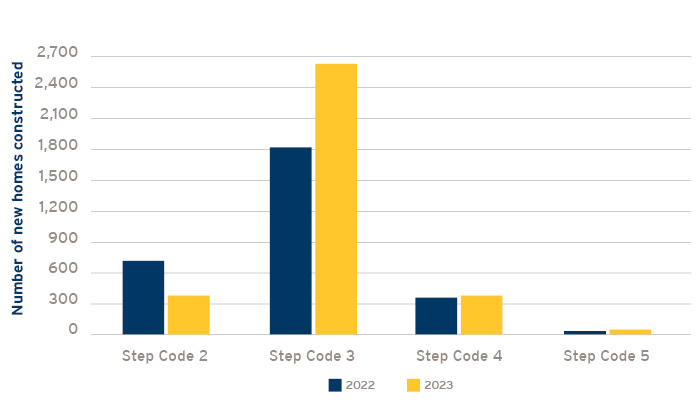
Number of new homes constructed and step code level achieved by New Home Program participants.
Source: FortisBC New Home Program participant database of gas customers.
One such Step 5 home was built in the Kelowna community of Wilden. As a case study, the tale of its construction hopes to educate and inspire other builders, developers and customers province wide to build more energy-efficient homes.
The Wilden home also exemplifies the advancements in new home construction. An integrated design process was embraced to build this home, with stakeholders collaborating to streamline the design process, develop innovative approaches and reduce costs (you guessed it: we’ve got rebates for using an integrated design process through the New Home Program).
That’s really what the work we are doing with the New Home Program is all about: building collaboration to help reduce the energy demand of new homes.
Nathan Au, Conservation and Energy Management program specialist, FortisBC
This work is part of our vision to lead B.C.’s energy transition and support customers in achieving their energy-efficiency goals. Over the next four years, we plan to invest close to $700 million in our electric and gas energy conservation and efficiency program2, pursuing more advanced energy-efficiency approaches in existing buildings, new construction and industry.
The CleanBC Roadmap to 2030 reaffirms that B.C.’s gas delivery system will continue to play a role in the province’s energy future moving forward and outlines ways to improve energy efficiency in homes and buildings.
Builders can contact their energy solutions manager to learn more about the rebates available through the New Home Program or email us at [email protected].
1Renewable Natural Gas (also called RNG or biomethane) is produced in a different manner than conventional natural gas. It is derived from biogas, which is produced from decomposing organic waste from landfills, agricultural waste and wastewater from treatment facilities. The biogas is captured and cleaned to create RNG. When RNG is added to North America’s natural gas system, it mixes with conventional natural gas. This means we’re unable to direct RNG to a specific customer. But the more RNG is added to the gas system, the less conventional natural gas is needed, thereby reducing the use of fossil fuels and overall greenhouse gas emissions.
2This is a combined amount for both the gas and electricity utilities and includes inflation. When a carryover of $2.778 million is added to the (unrounded) amount of $694.831, the total combined amount becomes $697.609 million.
.tmb-fbcbanner.jpg?sfvrsn=72627b97_1)


